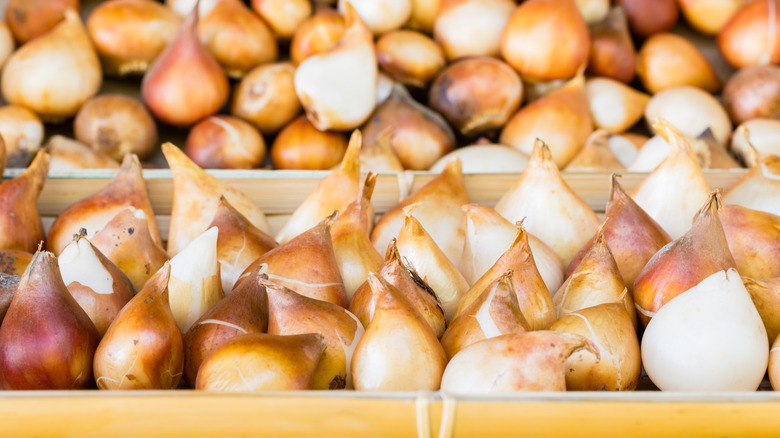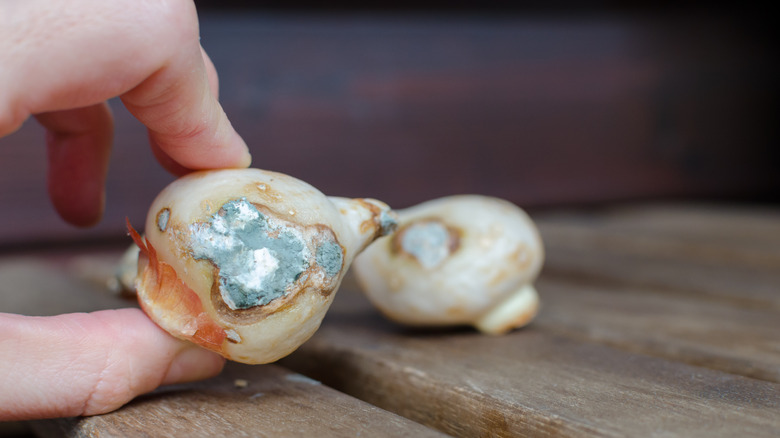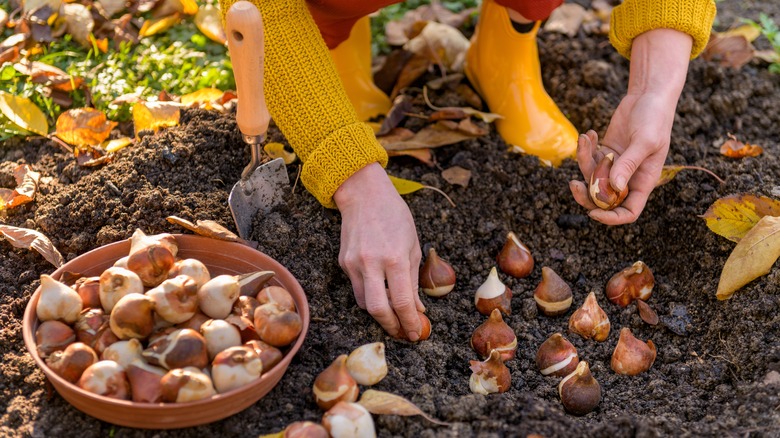The Telltale Sign That Your Flower Bulbs Have Gone Bad
Picture this: After months of anticipation, you've finally settled into planting season, eager to fill your garden with all sorts of different bulbs. You dust off your carefully stored flower bulbs, ready to plant them for a burst of color and fragrance that will make your garden the envy of the neighborhood. But wait — something seems off.
You see, despite their strength and ability to spring forth once under the right conditions, even bulbs have a shelf life. Typically, most bulbs can be stored for up to a year, but they perform best when planted within six months of being lifted, aka harvested. Whether they're tender or hardy bulbs, this timeline generally holds true.
But here's the kicker — even your flower bulbs can go bad, and it's so important to know the signs before it's too late. Not spotting and removing old or diseased bulbs could destroy your whole collection, ruining your entire season's worth of effort, and meaning you're going to have to purchase bulbs if you still want to plant next year.
What are some signs that your bulbs have gone bad?
Let's start with the most obvious sign that your bulbs have gone rogue: mushiness. Yes, just like that forgotten potato in the back of your pantry, bulbs can become soft and squishy when they've expired or exposed to rot. If you squeeze a bulb and it feels more like a water balloon than a firm vegetable, it's time to bid it farewell.
Next up, we have the dreaded mold, which loves to make its home on rotting bulbs. If you spot any fuzzy white, green, or black growth on your bulbs, they're likely beyond saving. Mold not only signals decay but can also spread to other healthy bulbs if you're not careful. To avoid a mold takeover, make sure you are effectively storing your bulbs in a dry, well-ventilated area.
Another red flag is the presence of an unpleasant odor. Fresh, healthy bulbs should have a neutral or slightly earthy smell. However, if your bulbs emit a foul, sour, or musty odor, they are most likely decomposing. Trust your nose — if it smells bad, it probably is bad.
How can you test if your bulb is bad or not?
If you're still unsure about the state of your bulbs, you can always try doing the weight test. A healthy bulb should feel "correct" for its size, essentially meaning that it weighs the same as it should, while a rotting or dried-out bulb will feel light and flimsy. This is because a healthy bulb will still contain water and nutrients within it, adding to its weight, while a rotted or dried bulb will have lost that water weight.
Remember, proper storage is key if you want to avoid bad bulbs. First, store your bulbs in a cool, dry place, with an ideal temperature range of 55 to 70 degrees Fahrenheit. Basements and garages often work well as long as they are not too humid.
Next, ventilation is crucial. Store your bulbs in mesh bags or ventilated containers to allow air circulation. This helps prevent mold and rot. Also, don't just stash your bulbs and forget about them. Check them periodically, that is, at least every few weeks, if not more often, for signs of rot or mold. Catching a problem early can save the rest of your stash.


